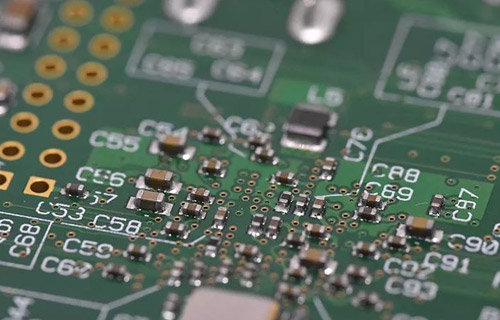Today's mass-produced electronic hardware is manufactured using well-known surface mount technology or SMT. There is no reason why SMT PCB board has a long way to go in speeding up PCB production in addition to providing many other advantages.

1. The component mounting offset mainly refers to the position offset in X-Y after the component is mounted on the PCB board. The causes are as follows:
1) Reasons for PCB board.
a. The PCB warpage exceeds the allowable range of the equipment. The maximum up warping is 1.2MM, and the maximum down warping is 0.5MM.
b. The height of the support pin is inconsistent, resulting in uneven support of the printed circuit boards.
c. Poor flatness of workbench support platform.
d. The wiring accuracy of the circuit board is low and the consistency is poor, especially since the difference between batches is large.
2) The suction air pressure of the mounting nozzle is too low, and it should be above 400mmHG during the removal and mounting.
3) The blowing pressure is abnormal during mounting.
4) The coating amount of adhesive and solder paste is abnormal or deviated. As a result, the position of the components drifted during mounting or welding, and too few components deviated from the original position when the worktable moved at high speed after mounting. The coating position was inaccurate, and the corresponding offset occurred due to its tension.
5) The program data device is incorrect.
6) The base plate is poorly positioned.
7) The movement of the mounting nozzle is not smooth when it rises, which is relatively slow.
8) The coupling between the power parts and transmission parts of the X-Y worktable is loose.
9) The nozzle of the mounting head is poorly installed.
10) The blowing time sequence does not match the descending time sequence of the mounting head.
11) The initial data settings of the suction nozzle center data and the camera of the optical identification system are poor.
2. Surface mount technology goes through the following five steps:
1) PCB production - this is the stage of actually producing PCB with solder points;
2) Deposits solder on pads to secure the assembly to the plate;
3) With the help of the machine, place the components on the precise solder joints;
4) Bake PCB to harden flux;
5) Check completed components.
3. Reasons that make SMT different from through-hole include:
Through the use of surface mount technology, the space problem that widely occurs in through-hole installation can be solved. SMT also provides design flexibility because it provides PCB designers with free control to create dedicated circuits. The reduced component size means that more components can be accommodated on one board, and fewer boards are required. The components in the SMT installation are lead-free. Shorter lead lengths for surface mount components reduce propagation delays and package noise. The density of components per unit area is higher because it allows the components to be mounted on both sides. It is suitable for mass production, thus reducing the cost. The reduction in size results in an increase in circuit speed. In fact, this is one of the main reasons why most manufacturers choose this method. The surface tension of the molten solder pulls the assembly into alignment with the pad. This, in turn, automatically corrects any minor errors that may occur in component placement. It has been proved that SMT is more stable in the presence of many vibrations or wobbles. SMT parts are generally cheaper than similar through-hole parts.
All this does not mean that SMT has no inherent shortcomings. The SMT may not be reliable if it is used as the only method of securing components that face significant mechanical stresses. Components that generate a lot of heat or are subject to high electrical loads cannot be installed with SMT. This is because the solder will melt at high temperatures. Therefore, in case of failure of SMT due to special mechanical, electrical and thermal factors, it is likely to continue to use through-hole installation. Similarly, SMT is not suitable for prototyping, because components may need to be added or replaced during prototyping, and high-density PCB board may be difficult to support.